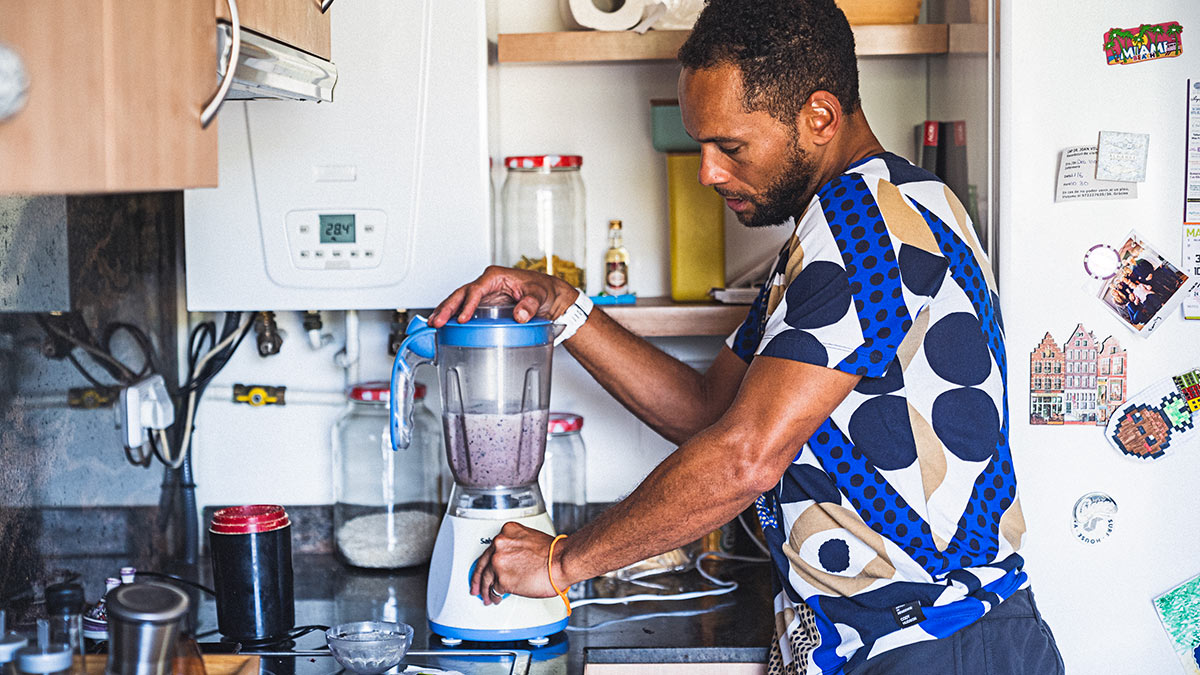Whether you’re a seasoned athlete or just starting, endurance sports demand a lot from your body. One key to improving performance, no matter your level, is understanding how your body utilizes energy sources, particularly carbohydrates. Here, we explore how your body processes carbs, why combining glucose and fructose can optimize energy utilization, and supplementation tips for endurance athletes.
Understanding Carbohydrate Transporters: SGLT1 and GLUT5
Our bodies have specific transporters for absorbing different types of sugars. One main way glucose is absorbed is through the SGLT1 transporter, while fructose utilizes the GLUT5 transporter. When you consume only glucose, the SGLT1 transporters can become saturated, limiting glucose absorption to about 60 grams per hour.
WorldTour cyclists who engage in high-intensity cycling often consume between 100 and 120 grams of carbohydrates per hour. This high intake is due to the intense demands of professional cycling, where maintaining high glucose levels for muscular and cognitive function is crucial. The ability to absorb and utilize such high amounts of carbohydrates is often a result of specialized training and adaptation, allowing their bodies to efficiently process these carbohydrates during high-intensity efforts.
For broader endurance activities, an intake of 60-90 grams per hour should be sufficient for energy demands. The specific intensity that correlates with this range varies based on the sport and the athlete’s conditioning. Generally, this recommendation applies to moderate to high-intensity endurance activities. These activities are typically characterized by sustained effort that is not maximal but still requires a significant and continuous energy output.
Carbohydrate Needs Based on Event Duration
For events lasting 4-5 hours, a higher carbohydrate intake is often necessary to maintain optimal performance. This is because glycogen stores (the body’s stored form of carbohydrates) are limited and can be depleted during such durations of exercise. Athletes might aim for the higher end of the 60-120 grams per hour range, depending on their tolerance and the event’s intensity.
In ultra-endurance events, carbohydrate needs are complex and vary significantly. While high carbohydrate intake is still crucial, the intensity is often lower compared to shorter events, which can affect the rate of carbohydrate utilization. Additionally, gastrointestinal comfort and the ability to consume and digest food become more significant factors over longer durations. Athletes might consume lower rates of carbohydrates per hour compared to shorter events but focus more on continuous and consistent intake to prevent energy dips and maintain endurance.
3 Key Benefits of Mixing Glucose and Fructose
By including fructose, which uses a separate transporter than glucose, you can increase your total carbohydrate absorption, thus enhancing available energy. This mixed intake leads to greater total carbohydrate oxidation than consuming glucose alone. While your glucose transporters may be saturated, fructose can still be absorbed, allowing for additional carbohydrate uptake.
Mixing fructose and glucose offers three key benefits for endurance athletes:
1. Ensures a steady energy supply
Maintaining a high carbohydrate oxidation rate during prolonged exercise is crucial for sustaining high-intensity performance. The combined absorption of glucose and fructose ensures a steady energy supply.
2. Avoids possible GI Issues
Consuming high amounts of glucose alone can lead to gastrointestinal issues. However, using both glucose and fructose minimizes this risk, as fructose absorption doesn’t compete with glucose, thereby reducing gastrointestinal stress.
3. Conserves Energy
The mix allows the body to maintain energy levels over longer periods, which is essential in endurance sports.
Supplementing Fructose and Glucose: Tips for Athletes
While about 60 grams of glucose can be absorbed per hour, adding fructose further enhances carbohydrate absorption. Ratios of 0.8:1 (fructose to glucose) are considered more beneficial for absorption. Such mixtures allow for higher carbohydrate intake with a lower onset of gastrointestinal discomfort, which is critical in both high-intensity and long-duration activities.
Maximize your carbohydrate absorption during those long runs, rides, and/or swims by properly supplementing fructose and glucose:
- Start with a 0.8:1 fructose-to-glucose ratio and adjust based on your personal tolerance and performance needs.
- Gradually increase your carbohydrate intake during training to adapt your digestive system.
- Always pair your carbohydrate intake with adequate hydration and sodium to facilitate absorption and reduce gastrointestinal discomfort.
- Practice your fueling strategy during training sessions to mimic race conditions.
If you’re struggling to find the perfect fructose/glucose concoction, consider giving RAW Nutrition’s endurance product, FUEL, a try. This new formula combines the perfect ratio of 0.8:1 (fructose to glucose) with 24g carbohydrates and 300 mg sodium per serving size, providing you with the optimal balance of sodium and carbohydrates.
Understanding how your body absorbs and utilizes carbohydrates can significantly impact your performance. Strategically combining glucose and fructose will enhance your energy levels, maintain high-intensity performance for longer durations, and minimize the risk of gastrointestinal distress. (Goodbye belly aches, hello new personal best!)
References
Beelen, M., et al. (2015). Performance enhancement by carbohydrate intake during sport: effects of carbohydrates during and after high-intensity exercise. Retrieved from https://pubmed.ncbi.nlm.nih.gov/25970669/
Jeukendrup, A. (2014, May). A step towards personalized sports nutrition: Carbohydrate intake during exercise. Retrieved from https://www.ncbi.nlm.nih.gov/pmc/articles/PMC4008807/
Rowlands, D., et al. (2015, November). Fructose-Glucose Composite Carbohydrates and Endurance Performance: Critical Review and Future Perspectives. Retrieved from https://pubmed.ncbi.nlm.nih.gov/26373645/
Urdampilleta, A. et al. (2020, July). Effects of 120 vs. 60 and 90 g/h Carbohydrate Intake during a Trail Marathon on Neuromuscular Function and High-Intensity Run Capacity Recovery. Retrieved from https://pubmed.ncbi.nlm.nih.gov/32679728/
Viribay, A. et al. (2020, May 11). Effects of 120 g/h of carbohydrates intake during a mountain marathon on exercise-induced muscle damage in elite runners. Retrieved from https://pubmed.ncbi.nlm.nih.gov/32403259/









